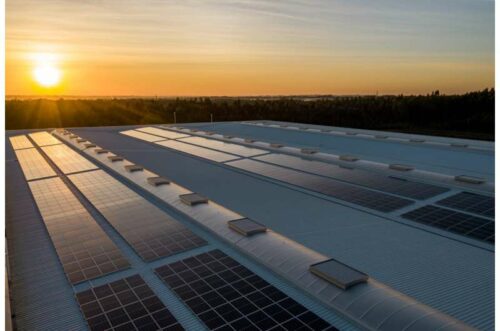Researchers at EPFL’s School of Basic Science have developed a method to make perovskite solar cells more stable and efficient.

Perovskite solar cells are being considered to replace the present form of silicon based photovoltaics. This technology has attracted a lot of attention as it offers increased light-harvesting capacity combined with a low cost of manufacturing, making perovskite solar cells (PSCs) prime candidates for replacing current silicon-based devices.
Perovskite solar cells are built from nano-sized crystals that can be dispersed into a liquid and spin-coated onto a surface using low-cost, well-established techniques. But a problem with commercializing these cells is their operational stability, which puts them at a disadvantage compared to photovoltaic technologies already on the market. This is especially a problem with mixed-halide perovskites, which are ideal materials for tandem solar cells and emission-tunable LEDs because they combine high compositional flexibility with optoelectronic performance.
A team of researchers at EPFL’s School of Basic Sciences have now developed a method that improves both, power conversion efficiency and stability, of solar cells based on pure iodide as well as mixed-halide perovskites, while also suppressing halide phase segregation in the latter.
The method treats PSCs with two alkylammonium halide modulators that work synergistically to improve solar cell performance. The modulators were used as passivators, compounds used to mitigate defects in perovskites, which are otherwise promoting the aforementioned degradation pathways. Researchers were able to use the two modulators to stop halide segregation and thereby substantially reduce the drops in power-conversion efficiency seen in long-term use of PSCs.
The new approach resulted in power-conversion efficiencies of 24.9% for one perovskite composition (α-FAPbI3) and 21.2% for the other (FA65MA35Pb(I65Br35)3). About 90% and 80% of the initial efficiencies were retained after 1200 and 250 hours of continuous operation, respectively. The authors write, “By addressing the critical issue of stability, our results represent an important step towards large scale practical applications of PSCs.”
References : Michael Graetzel, Cooperative Passivation of Perovskite Solar Cells by Alkyldimethylammonium Halide Amphiphiles, Joule (2022). DOI: 10.1016/j.joule.2022.11.013. www.cell.com/joule/fulltext/S2542-4351(22)00571-2








